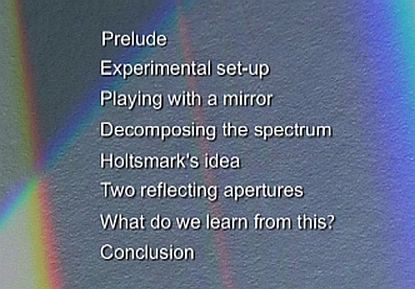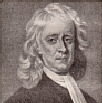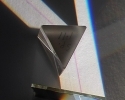|
Contents
The film is
organized into eight chapters:

In the following
the contents of the chapters is outlined. Click on the respective
icon if you have already seen the film and want to go further
into the depth of the presentation and the propositions made in
it.
I regard this page as a kind of
discussion forum. Send your contribution to pehr@pscolour.eu
and I will put it on the page!
See for instance this supplement
to the film. http://pscolour.eu/adhoc/vt/inverted_spectra.htm
PRELUDE
 |
Light weaves in space
and shines in matter. A world of images based on contrast
is created. Goethe studied simple pictures in black and
white through a glass prism and found four basic kinds of
spectra, complementary in pairs. To the conventional
Newtonian spectrum there corresponds an inverted
spectrum. |
EXPERIMENTAL
SET-UP
 |
A parallel flux of
light is sent through a glass prism and sweeps along a
piece of white cardboard. The white band renders a flux
of dispersed light visible and in this various colour
spectra are produced with the help of apertures. |
PLAYING
WITH A MIRROR
 |
When the apertures are
in form of plane mirrors the original light flux is
divided into two complementary parts. I becomes apparent
that they are aspects of one and the same phenomenon. |
DECOMPOSING
THE SPECTRUM
 |
A short recapitulation
of Newton' s demonstration from Opticks (1704), showing
that a light ray, produced by letting the light from a
small region of a spectrum pass through an aperture and
further on through a prism, is deviated without changing
its colour or spreading out into a multicoloured
spectrum. Because of this it is called
"monochromatic". |
HOLTSMARK'S
IDEA
 |
Now, how would the
corresponding demonstration, performed on the inverted
spectrum, look? Due to the principle of complementarity,
any coloured ray from it, say a purple ray, should not
spilt up into several colours upon passing through prism.
The Norwegian physicist Torger Holtsmark clarified
theoretically how an optical arrangment should be made in
order to produce a "monochromatic" purple ray.
The key concept is that the ray should be produed within
a bright environment (whereas the newtonian monchromatic
light rays are produced in a dark environment!) |
TWO
REFLECTING APERTURES
 |
To accomplish this an
arrangement with two mirrors with narrow slits is used
(see photo). They should be mounted strictly parallel to
each other. In the film we see how they are placed into
the flux of dispersed light from the main prism. |
WHAT DO WE
LEARN FROM THIS?
 |
To each monochromatic
light ray there corresponds a monochromatic shadow ray,
having the complementary colour. The monochromatic shadow
rays are a kind of coloured shadows. Evidently, in
connection with images -- thus with the visual world in
general -- darkness plays a role as important as light.
The demonstration means a rehabilitation of darkness. |
CONCLUSION
 |
Rays of light are just
images, as are the rays of shadow. The images and their
colours are in light, are produced by light, but they are
not light itself. Goethe says: "First and foremost, let us
remind ourselves that we wander in the realm of
images" |
FACTS
ABOUT THE DVD-EDITION
 |
Speaker
text in three languages: English, German and Swedish Length: 17 min, Aspect ratio
4:3, DVD Video PAL
Including a booklet
with foreword by Prof. Johannes Grebe-Ellis and an
explanatory text by Pehr Sällström: "The Enigma of
the Purple-Ray". Given in English as well as German.
For the corresponding Swedish text, see here --> 
Published by DRUCKtuell, Druck- und
Medienzentrum Gerlingen GmbH
waldorfbuch@dmzg.de
Ordering:
http://www.waldorfbuch.de/shop/themes/kategorie/detail.php?artikelid=537&source=2
Price: 21.00€
ISBN 978-3-940606-60-0
|

PSColour\contents-uk.htm per 2010-02-14 updated 2014-11-03
|









